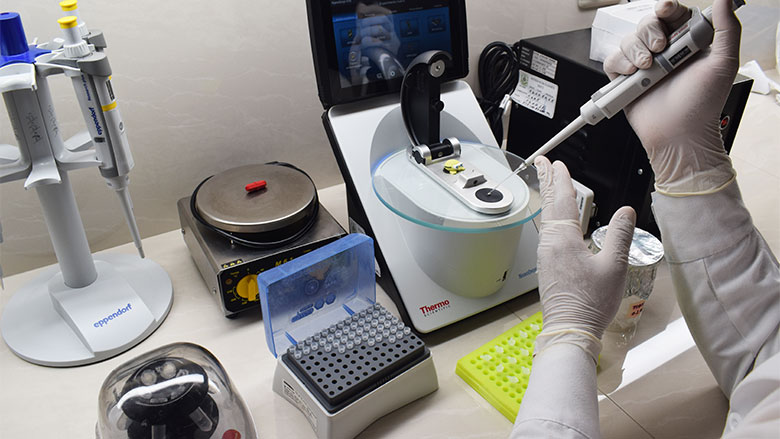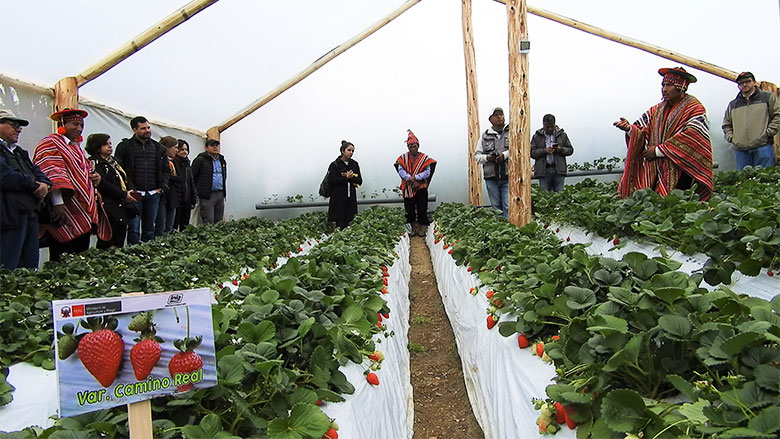Challenge
For a long period after its creation in 1978 with a mandate to support innovation in the agriculture sector, Peru’s National Institute for Agricultural Innovation (INIA) made limited progress. Constraints included stagnant budgets, inadequate infrastructure, constant reorganization, and a high rate of staff turnover. Operating in an uncertain and constantly shifting policy environment, INIA faced difficulties establishing coherent priorities and implementing effective programs. INIA’s chronically weak performance led to waning political support that was soon reflected in a lack of financial backing: between 2000 and 2010, Peru’s public spending on agricultural research and development averaged less than 1 % of agricultural GDP, extremely low by global standards. The resulting lack of innovation contributed to a productivity slowdown and kept the agriculture sector from achieving the high rate of sustained growth needed to improve food security and reduce poverty in rural areas.
Approach
The agricultural innovation model traditionally used in Peru was linear and dominated by public agencies: Public research institutes were expected to generate improved technologies that could be passed to public extension agencies for transfer to end users. The World Bank, drawing on global experience and in partnership with the Inter-American Development Bank, set out to replace the linear model with a multi-actor innovation network in which public agencies, private firms, civil society organizations, and end users could interact through iterative feedback loops, allowing innovations originating in different places to flow throughout the system in response to supply and demand forces. To facilitate the emergence of the new multi-modal innovation network, the National Agricultural Innovation Project (known as PNIA from its name in Spanish) supported activities on several fronts. One set of activities focused on strengthening INIA as the leader of the national agricultural innovation system by renovating aging infrastructure, modernizing equipment, training staff, and reforming institutional policies and operating procedures. A second set of activities focused on building the national agricultural innovation system by establishing regional bodies and supporting the design of localized innovation agendas. A third set of activities focused on promoting innovation on the ground, most notably through a demand-driven competitive grants program that directed funding to innovation activities via 541 subprojects implemented throughout the country.
Results
PNIA, implemented between 2015 and 2021, achieved the following key results.
- Strengthening INIA’s capacity. PNIA supported necessary legislative changes in INIA’s legal status from a public agency to a Specialized Technical Organization, paving the way for reforms in governance arrangements and management systems. In addition, infrastructure at INIA’s 13 research stations was upgraded, and laboratory facilities and equipment were modernized and upgraded.
- Consolidating the national agriculture innovation system. PNIA helped establish 20 agricultural innovation technical commissions and dozens of regional meetings with local partners and stakeholders during which local innovation agendas were developed. Decentralized events coordinated by PNIA promoted collaboration between key actors to generate, transfer, and adapt knowledge and technology at the regional level.
- Financing demand-driven innovation. PNIA supported a competitive grants program that funded subprojects in several categories, including strategic research, adaptive research, extension, seed enterprise support, and capacity building. According to the project’s external Impact Evaluation, strategic research subprojects resulted in the publication of 136 articles in indexed scientific journals. Meanwhile, the adaptive research, extension, and seed enterprise support subprojects boosted agricultural incomes for nearly 32,000 subproject beneficiaries by 34 % on average, compared to a control group.
- Training the next generation of innovators. PNIA established a Scholarship Fund that awarded scholarships for postgraduate study, internships, and technical training. The Fund financed 82 master’s students, and while some students had to cut their programs short due to the COVID-19 pandemic, 57 received their degrees (including 25 women). The Fund also supported 255 internships (66 national and 189 international).
- Raising awareness of the innovation agenda. PNIA supported activities designed to raise awareness of the innovation agenda and build political support for further public financing. These included annual agriculture innovation fairs, known as AGRONOVAs, that provided venues for hundreds of exhibitors (many of them beneficiaries of PNIA financing) to showcase their innovations before thousands of participants. The CARAL National Innovation Prizes competition attracted enormous interest and highlighted innovation efforts in the fields of agrobiodiversity, value-chain development, climate change resilience, and sustainable development. The CARAL competition attracted 169 nominations, from which 20 initiatives were selected for recognition as outstanding examples of innovation promotion.

Molecular processing of mushroom specimen in San Martin, Adaptive Research Subproject. Photo: World Bank

